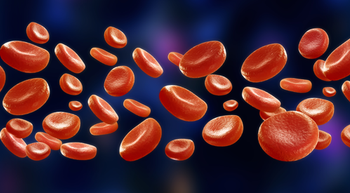
Adjuvant T-DM1 Improves Survival Vs Trastuzumab During Long-Term Follow-Up in HER2-Positive Early Breast Cancer
The survival benefit derived from T-DM1—particularly invasive disease-free survival and overall survival—persisted throughout 8 years of follow-up in HER2-positive early breast cancer with residual invasive disease.
T-DM1 (ado-trastuzumab emtansine; Kadcyla) improved overall survival (OS) and invasive disease-free survival (iDFS) compared with trastuzumab (Herceptin) over 8.4 years of follow-up in adult patients with HER2-positive early breast cancer that had residual invasive disease after neoadjuvant therapy.
Findings from the KATHERINE trial were presented at the 2023
“TDM-1 is the first therapy to show an improved survival after post-surgical therapy in patients with HER2-positive early breast cancer and residual invasive disease after neoadjuvant therapy,” study author, Sibylle Loibl, MD, PhD, German Breast Group, Neu-Isenburg; Centre for Haematology and Oncology Bethanien, Goethe University, said in a presentation of the findings.
The trial included 1486 patients with HER2-positive early breast cancer who received a minimum of 6 cycles of chemotherapy and a minimum of 9 weeks of trastuzumab. A second HER2-targeted agent was also permitted. Patients were randomized within 12 weeks of surgery in a 1:1 manner to receive 14 cycles of either T-DM1 or trastuzumab. Radiation and endocrine therapy could be administered at the discretion of the investigator, and patients were permitted to switch to trastuzumab if T-DM1 became intolerable.
A total of 740 patients were treated with T-DM1, and 720 were treated with trastuzumab. At the 8.4-year follow-up mark, 521 (70.1%) and 461 (62.0%) in the T-DM1 and trastuzumab arms, respectively were still alive.
Findings after 8.4 years (101 months) showed that a higher percentage of patients in the trastuzumab arm experienced an iDFS event compared to those in the T-DM1 arm, at 32.2% (n=239) and 19.7% (n=146), respectively (HR, 0.54; 95% CI, 0.44-0.66; p<0.0001). Notably, there was a 13.7% absolute iDFS benefit at 7 years.
The most common sites of first iDFS events were:
- Distant recurrence: 21.5% and 14.7% in the trastuzumab and T-DM1 cohorts, respectively, including central nervous system (CNS) metastases in 5.1% and 7.0%
- Locoregional recurrence: 6.2% vs 2.2%
- Contralateral breast cancer: 2.6% vs 0.9%
- Death without prior event: 1.9% in both arms
Most patients went on to receive 1 or more treatments after experiencing an iDFS event. Most commonly, they were HER2-directed therapies, platinum compounds, taxanes, and capecitabine.
These findings further support the promising findings of KATHERINE that were observed years ago.
“Five years back in 2018, the interim analysis for the iDFS was presented at the San Antonio Breast Cancer Symposium [and] demonstrated a large and clinically meaningful and statistically significant benefit for T-DM1 over trastuzumab to the hazard ratio of 4.5 and still highly statistically significant p value of 0.01 with a 3-year iDFS of 77%. That was an absolute difference of 11%. At that time, with a short follow-up, overall survival was immature, and the hazard ratio was 0.7. And the p value [of] 0.08 did not meet the pre-specific boundary,” Loibl said.
Now, more mature OS data favor T-DM1 at the 8.4-year mark, with a total of 89 patients (12%) experiencing an OS event in the T-DM1 arm, compared with 126 (17%) in the trastuzumab arm (HR, 0.66; 95% CI, 0.51-0.87; p=0.0027). Loibl explained that T-DM1 led to an absolute OS benefit of 4.7% at 7 years, with a 34% significant reduction in the risk of death.
The causes of death were breast cancer (9.5% in the T-DM1 cohort, vs 15% in the trastuzumab cohort); adverse event (0.1% vs 0%); and other (2.4% vs 2.5%).
No new safety signals emerged with longer follow-ups from
Serious AEs occurred in 0.3% (n=2) and 0.6% (n=4) of patients in the T-DM1 and trastuzumab groups, respectively. They were cardiac disorders (0 vs 0.4%), hepatobiliary disorders (0.3% vs 0%), and vascular disorders (0 vs 0.1%).
Regarding patients discontinuing the study, 105 (14.1%) and 159 (21.4%) in the T-DM1 and trastuzumab arms, respectively, stopped treatment with an iDFS even reported, while 117 (15.7%) and 123 (16.6%) discontinued before an iDFS event.
Reference
Loibl S, Mano M, Untch M, et al. Phase III study of adjuvant ado-trastuzumab emtansine vs trastuzumab for residual invasive HER2-positive early breast cancer after neoadjuvant chemotherapy and HER2-targeted therapy: KATHERINE final IDFS and updated OS analysis. Presented at: 2023 San Antonio Breast Cancer Symposium; December 5-9, 2023; San Antonio, TX. Abstract GS03-12
Newsletter
Knowledge is power. Don’t miss the most recent breakthroughs in cancer care.

















































































